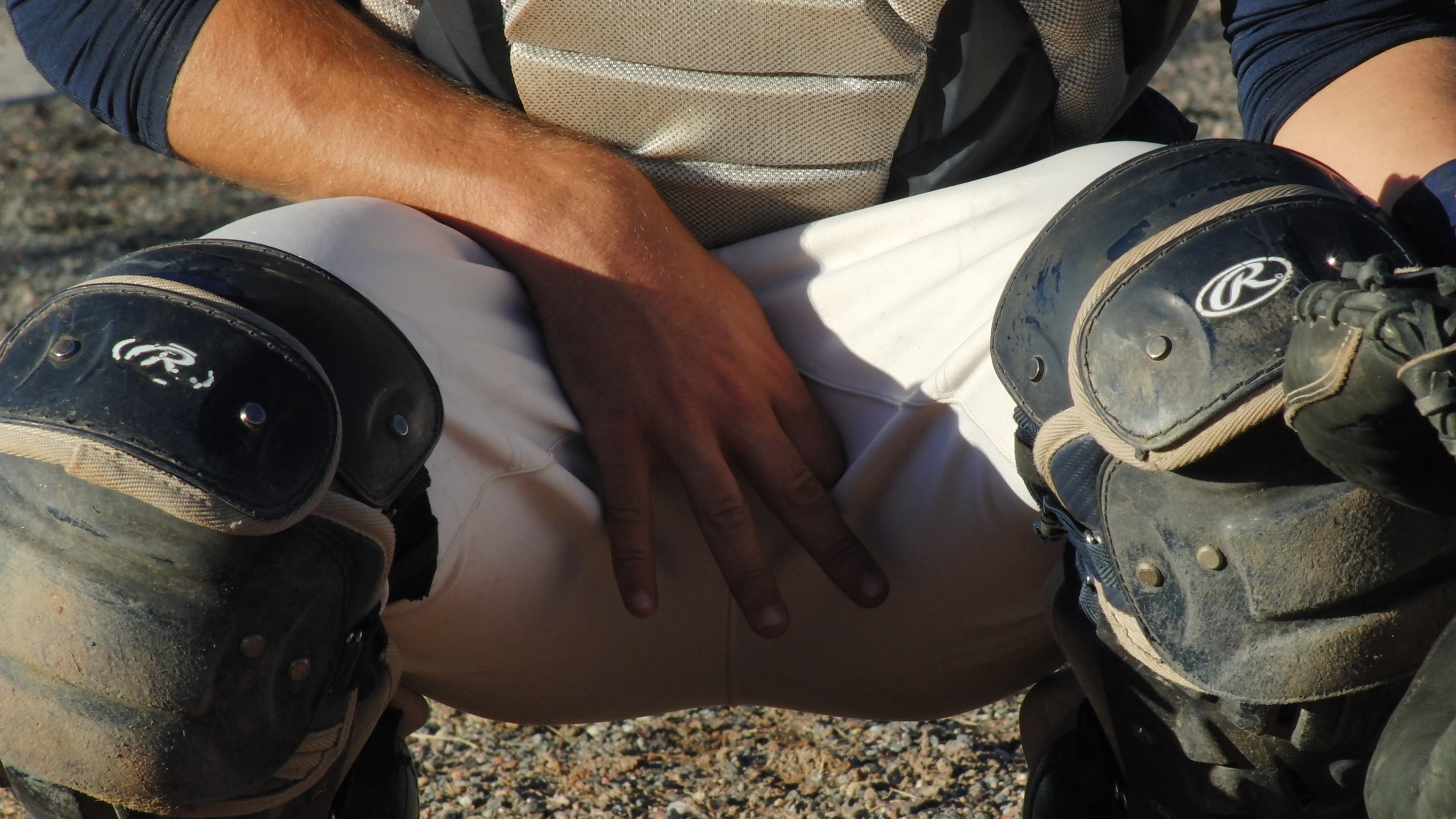The catcher must be athletic, intelligent, and resilient. He knows his responsibilities and everyone else’s too. Through knowledge of the game, connection with teammates, and insights about his opponents, he instills confidence on the field.
Our catchers must be diligent in preparing their bodies on a daily basis for the grind of a season behind the dish. The video in the folder shows the following active warm-up specific to catchers (all warm-up exercises should be done wearing shin guards):
Side lunge
Stationary Spidermans
Stationary elbow to instep into hamstring lean w/ heel
Squat w/ side-to-side movement
Stationary hip openers into low lunge
Communication
The catcher is in charge of making sure every defender is positioned correctly and aware of the situation. Before each new batter, or each new situation the catcher should stand in front of the plate and hold up the number of outs while yelling the number of outs and what to do in the situation. For example, with a runner on 2nd and one out the catcher will hold up “1” while loudly saying, “one down, check and get one.”
Tip: Communicate with an outfielder by going through an infielder.
The catcher always gives direction where the ball should be thrown on all balls that are fielded by the pitcher or a corner infielder who is moving toward the plate. The catcher should yell the base where the ball will be thrown on base hits to the outfield or on flies with runners on base.
On outfield throws to the plate where there is a cutoff man: if the throw is on line and strong enough to get to the plate, say “leave it”. If the ball needs to be cut yell “cut” then the number of the base where the ball should go. For example, “cut 2”or “cut 4.”
Communication goes beyond the field. Between innings the catcher should be talking to the pitcher about hitters’ tendencies, the umpire’s strike zone, and anything else that might help the team be more effective.
Backing up 1st Base
The catcher is responsible for backing up 1st base on all balls hit to the infield unless there are runners in scoring position. It is especially important to back up 1st on double play attempts. If an errant throw allows the lead runner to advance past 2nd, there is plenty of time for the catcher to run back to the plate. The catcher is also responsible to trail the runner who singles so that the catcher is in position to back up a back pick attempt.
Rapport with Pitchers
In principle if a pitcher shows signs of fatigue or if he seems to be losing his composure on the mound, make a visit and get him back in the right frame of mind. Ask him if he feels ok physically. If he is injured call the coach out. If the pitcher is ok physically, talk about how you’re going to pitch the next batter. Call the infield in if necessary to insure everyone is prepared to make the next play.
Establishing Good Practice Habits
- Always use a 4-seam grip.
- When playing catch, side-step when catching balls that are wide. Don’t just reach with one hand.
- Always pick up a stationary ball with your throwing hand.
- If you have a passed ball in during a bullpen, throw the ball back and do two perfect shadow blocks before receiving the next pitch.
- When you catch a pitcher, your throws should be just as accurate as the pitcher’s. Hit the pitcher on his glove-side shoulder with a crisp throw every time you throw the ball back







